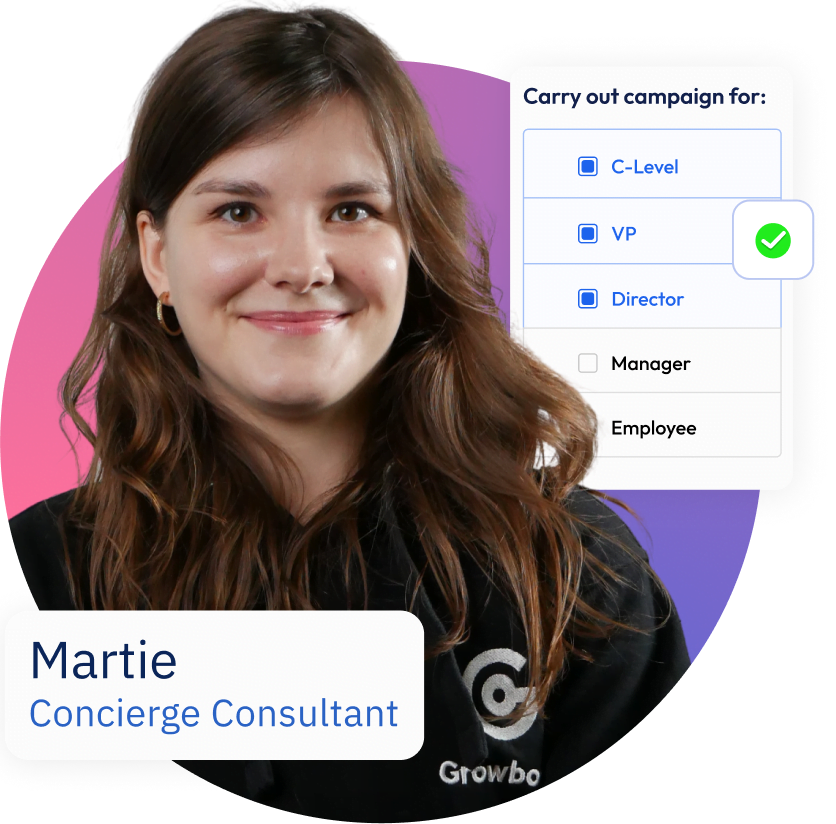Why should you choose an Email drip campaign?
Your drip campaign comes when you want to make your sales growth predictable.
You may think that this is a very specific solution to a broad dilemma faced by companies every day. That may lead you to wonder, “will this work for my company and the situation it is in?”
Of course, an outbound strategy isn’t the only approach you can take. You can read more about the pros and cons of employing an outbound or an inbound strategy. For most companies, a mixture of the two will give you the best result.
So if you are going to use an outbound strategy, why would you choose an email drip campaign over other outbound means of outreach?
Email is effective, easy to scale, and predictable.
- A well-targeted drip campaign can convert 5 percent of all the prospects you send messages to. You can then use them to keep your account executives busy closing deals.
- Manual prospecting and email campaigns can get each individual SDR around 200 prospects a day, providing your sales funnel with a steady stream of qualified prospects. With the right automation tools and extra email accounts, one person can increase their scope to 2000 prospects a day.
Because you are using email, most of the process of prospecting and executing your drip campaign can be automated. There are some good tools out there like Growbots that can cut down a lot of the time you spend on your campaign. In the most clear-cut cases, we have seen individuals prospect for 200 potential clients and start their drip campaign on a single email account in as little as 5 minutes! By using more than one email account, you can repeat the process in the same amount of time and reach more prospects.
A common path that a startup takes, as described in Aaron Ross’ essential work on the subject Predictable Revenue, goes like this:
- The CEO goes out and drums up business through personal contacts and connections developed at conferences.
- There is a rocky transition period where the company looks for strategies to scale its marketing and sales funnel.
- If the company survives the second stage, it goes on to grow in a predictable manner.
An outbound drip campaign is designed to remove the uncertainty of the transitional period and quickly move on to predictable growth in sales.
So what should you think about when you start prospecting for your outbound campaign?
Looking for Prospects

The three primary considerations when looking for clients to benefit from your product are:
- Create ideal customer profile
- Find the correct contact information
- Qualify the prospect based on how valuable a customer they might be
Before you can start generating either inbound or outbound prospects, you need to know who you are targeting. A good way to do this is to look at the people who have already bought your product.
- Where do they come from?
- Are they tech entrepreneurs in San Francisco or are they financiers in New York?
- Where do they fit in their respective organizations?
- What values do they have?
These are just a few of the questions that can get you closer to understanding your ideal customer profile.

You still need a target customer at the beginning of the process and the ICP provides it. The target that you create will then let you know where you should be searching for information.
Now that you know the kind of person you are searching for, it’s time to get started. There are a few different sources that you can access.
Lead providers/databases
There are a plethora of these out there and they run the gamut from cheap bulk lists that have relatively poor accuracy to highly searchable specific databases who provide high-quality leads for at higher cost. I would suggest getting the highest-quality data you can afford. Bulk lists may be cheap but the time and effort it takes to separate the good prospects from the bad often make up for any the savings that you find.
Social Media
LinkedIn is a perennial favorite, given the sheer volume of data it has collected about business leaders. It is also one of the most up to date sources but it can be difficult to find all of the information you need to make contact with a prospect. Twitter is also good, particularly in the tech space. If you look through conversations that prospects have with their followers, they will sometimes volunteer their contact details in a bid to talk to their followers.
The company’s own website
This might seem like it’s obvious but a lot of prospectors overlook this source. Since you have your ideal customer profile you can look for companies that fit the bill. Theses can be companies that are very similar to clients you have successfully established in the past. A company’s own website can often provide a lot of details that you would not normally expect to be public. That said it should not be relied on completely as the contact information you find may be for a gatekeeper rather than the decision maker you want to talk to.
Now that you have the contact details of the prospects in your hand it is important to start to qualify them. There are some serious questions that you need to consider
Does this person meet our ICP (industry, geography, etc.)
Have you had more success in the past with new managers trying to make their mark or with people who are experienced in their position? Do you do well selling to younger or older people? It is all important. You can use this information to create buyer personas.
Can your product solve a problem this company has?
You might sell the best product or service in the sector but if there is a cheaper alternative which solves all of the company’s problems, why are they going to change to you?
Does the prospect already use products like the one you are trying to sell?
This can be really useful. If you are selling sales automation software and a company already uses marketing automation, this could be a good fit. After all, they are already open to automating their processes.
Is your prospect a decision maker or somebody who can influence a decision maker?
Look at their title. Don’t try to sell sales automation software to the HR department. If you aren’t sure, it can be worth it to ask someone higher up the corporate structure to refer you to the decision maker.
Before you start putting your leads into your drip campaign, there are something you need to consider…
How good is the information that I have?
You can expect a high bounce rate from bulk data or a low bounce rate from targeted database. This is important because a high bounce rate can cause you to run afoul of spam filters. If your domain gets on an email blacklist, none of your emails will get to their recipients. You can read more about it in Sales Outreach Emails In Light of Anti-SPAM Laws
Great, you now have your prospects and are ready to set up your drip campaign. You now need to write the first email for your campaign and set up your follow up emails to make the most of your contact
You can do this all on your own. For basic functionality using a free tool, you can set up your email campaign with Streak. If you are looking for a more complete system combining lead generation with a fully integrated emailing tool you can check out Growbots.
Good luck with your prospecting!
























